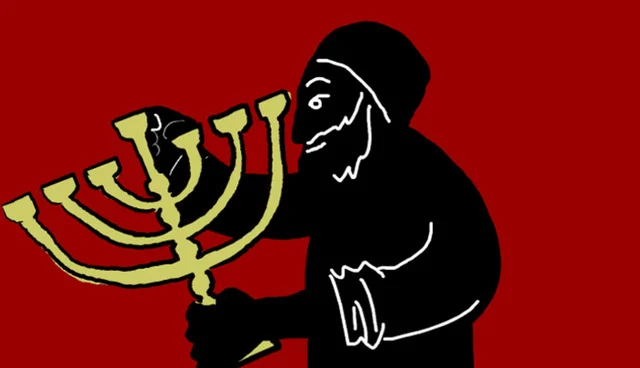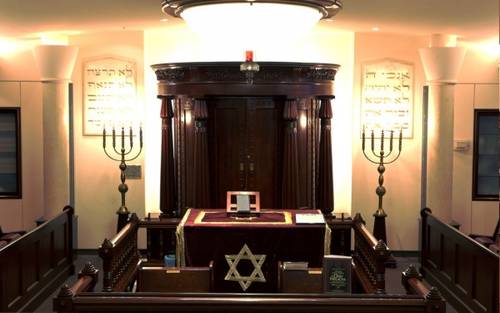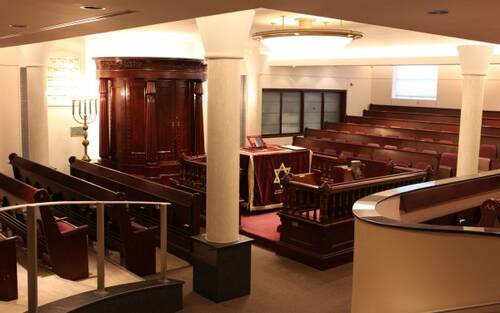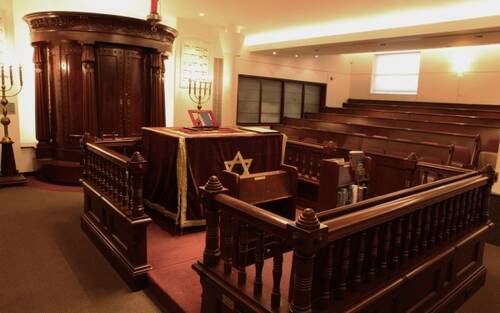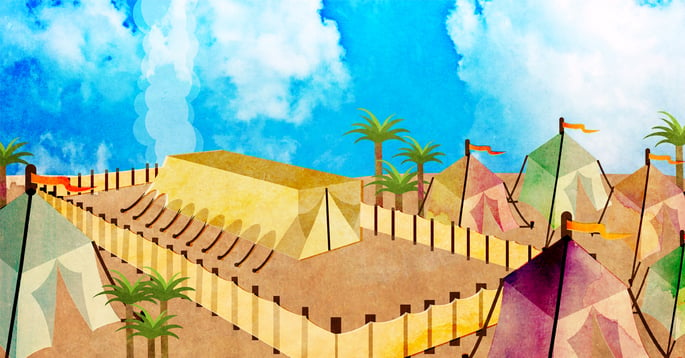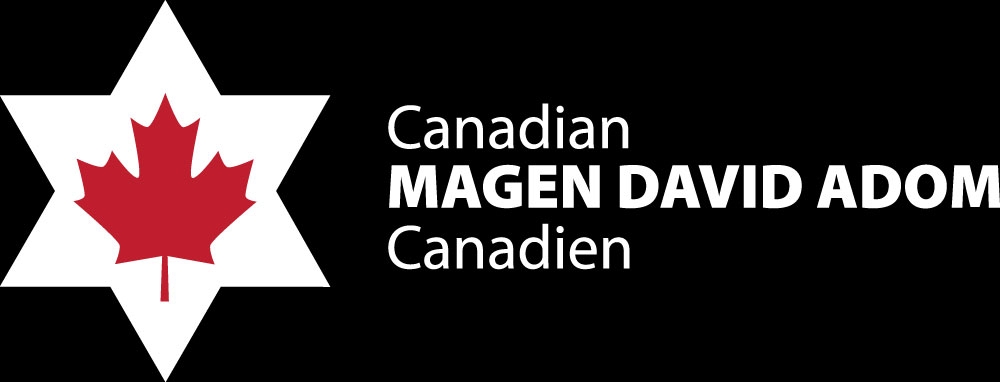Bonjour / Hello [nickname_else_first_name],
Table of contents
1) Perashat Hashavoua - Rabbi Eli Mansour
2) Halakhat Hashavoua (Halakhot related to day to day life) - Hazzan David Azerad
The Four Parashiyot -peninei halacha
3) Holy Jokes!
4) FOR KIDS!
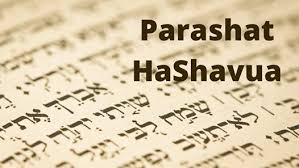
This Week's Parasha Insight with Rabbi Eli Mansour
Parashat Vayakhel: Building the Mishkan With Clean Money
The Torah in Parashat Vayakhel tells of Beneh Yisrael’s generous donation of materials towards the construction of the Mishkan. They eagerly and happily parted with much of the gold, silver and other riches which they had taken with them from Egypt for the purpose of building the Mishkan where the Divine Presence would reside.
One the most important principles that apply in the area of charitable donations is known as "Soneh Gazel Be’ola" (Yeshayahu 61:8) – G-d despises donations of stolen funds. Donations for noble and sacred purposes must be made with "clean money," assets that have been acquired legally and appropriately. If a person earns money through devious, corrupt means and donates it to charity or to a religious institution, this donation is "despised" by the Almighty.
In light of this, we might question how Beneh Yisrael were allowed to donate the riches taken from the Egyptians for the Mishkan. Before the Exodus, they were commanded by G-d to "borrow" clothing and utensils from the Egyptians (Shemot 11:2). If the Egyptians thought they were lending, and not giving, these materials, then they obviously expected them back at some point. Of course, Beneh Yisrael never returned these assets. How, then, could they have been used for the Mishkan? Did these materials not violate the fundamental rule of "Saneh Gezel Be’ola," that donations must be made with "clean money"?
The answer, seemingly, is that Beneh Yisrael rightfully deserved these riches, and much more, as back pay for the slave labor they performed for centuries. They were forced to perform back-breaking work all day, every day, for 210 years, without pay. Certainly, they had the right to demand payment for all this work, and so we might explain that the Egyptians’ possessions which they took with them at the time of Exodus were their due payment, rightfully and legally obtained.
The question, however, arises as to why the Egyptian citizens needed to pay for this labor. Beneh Yisrael worked not for them, but for Pharaoh, for the government. Presumably, then, it was Pharaoh’s responsibility to pay them from his treasury, and not the responsibility of the country’s citizens.
The answer to this question can be found in the Book of Bereshit, in Parashat Vayigash (47:20), where we read of Yosef’s management of Egypt during the harsh famine that struck the country. The Torah tells that Yosef, the vizier of Egypt, purchased all property in Egypt. He effectively put an end to private property in the country, as the government acquired all the land, and the people worked the land as sharecroppers, giving a percentage to the government and then keeping the rest. In essence, then, the entire country was the government’s property, and the people’s possessions were on loan, so-to-speak, from the government.
This is why Beneh Yisrael were justified in taking the riches from Egypt with them when they left the country. Since the government owed them two centuries’ worth of back pay for the slave labor they performed, and the government legally owned all the country’s wealth, Beneh Yisrael were entitled to the property of ordinary Egyptian civilians.
On this basis, we can perhaps explain an otherwise perplexing comment in the Midrash regarding Keri’at Yam Suf – the miracle of the splitting of the sea. When Beneh Yisrael found themselves trapped against the sea, the Midrash relates, the sea refused to split and let them escape – until it saw Yosef’s coffin, which Beneh Yisrael carried with them as they left Egypt. It was only in the merit of Yosef, the Midrash tells, that the sea split and allowed Beneh Yisrael to escape from the pursuing Egyptian army. Why did the sea initially refuse to split, and why did it agree only in Yosef’s merit?
Beneh Yisrael were destined to encamp at Mount Sinai and construct the Mishkan with the materials they had taken from the Egyptians. But this could happen only because of Yosef – meaning, because Yosef, who ran Pharaoh’s government, had purchased all property in Egypt. It was only because of Yosef’s overhaul of the country’s economic structure that it was legitimate for Beneh Yisrael to proceed to build a residence for G-d with the spoils of Egypt. Otherwise, this would have been stolen property, which could not possibly be used to build the site where the Divine Presence would reside. And thus the sea split, allowing Beneh Yisrael to cross and proceed to their destiny, only once it was verified that the riches they brought with them were legally obtained and thus suitable for the Mishkan.
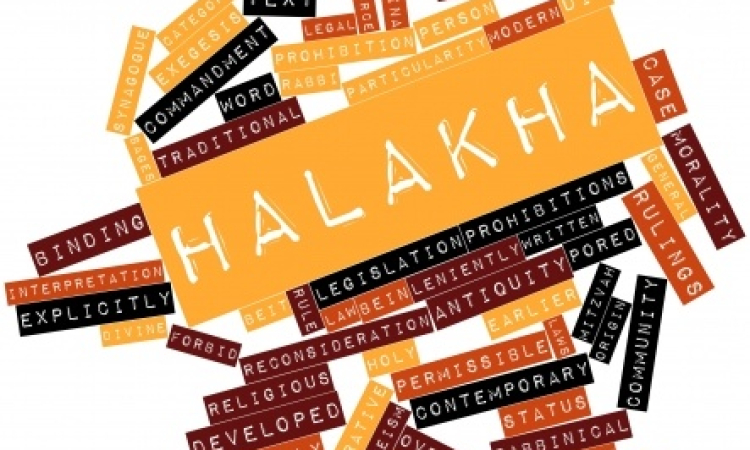
The Four Parashiyot -peninei halacha
The Sages instituted the public reading of four Torah passages (parshiyot) in addition to the weekly Torah portion: Parashat Shekalim, Parashat Zakhor, Parashat Para, and Parashat Ha-ĥodesh. We read each of the latter three parshiyot on a Shabbat during the month of Adar, while Parashat Shekalim is usually read on the Shabbat before Adar begins.
On these Shabbatot, we take out two Torah scrolls from the ark. First, we read the weekly parsha from the first scroll, dividing it into seven aliyot as on any other Shabbat. Then, we read the special parsha as maftir (the concluding aliya that precedes the haftarah) from the second scroll. Since the haftarah, which is a section from the Prophets, must relate to the content of the maftir, the haftarot of these weeks all deal with themes connected to the special parsha that was read from the second scroll, not to the weekly portion that was read from the first.
The first of the four parshiyot is Parashat Shekalim (Shemot 28:9-15). This parsha was instituted to remind every Jew to contribute the yearly half-shekel, which was used to purchase communal offerings. Since it was necessary to begin purchasing the offerings with the new funds in Nisan, the Sages instituted the reading of Parashat Shekalim a month earlier, to remind everyone to make his donation. Even though the Temple is in ruins today, and we do not have the privilege of bringing sacrifices, we read Parashat Shekalim in commemoration of the Temple (see mb 685:1, Mikra’ei Kodesh §3).
The second parsha is Parashat Zakhor (Devarim 25:17-19). This reading fulfills the Torah commandment to remember what the Amalekites did to us. The Sages ordained that we read this parsha before Purim in order to juxtapose the mitzvah of remembering Amalek to Purim, when we celebrate the fulfillment of that mitzvah through the elimination of Haman, who was a descendant of Amalek.
The third parsha is Parashat Para (Bamidbar 19:1-22), which instructs one how to purify himself from ritual impurity, so that he may enter the Temple and bring offerings. The Sages instituted that it be read as the month of Nisan approaches, so that one can prepare and purify himself for the upcoming Pesaĥ offering. Even though we do not bring this offering nowadays, we read Parashat Parah in commemoration of the Temple.
The fourth parsha is Parashat Ha-ĥodesh (Shemot 12:1-20), which mentions the sanctification of the new moon and the mitzvot of Pesaĥ. The reading of his parsha was instituted for just before the beginning of Nisan, because Nisan is the first month of the year in the Torah’s accounting and because it alerts us to start preparing for Pesaĥ and all its mitzvot.
When Rosh Ĥodesh Adar or Rosh Ĥodesh Nisan coincides with Shabbat, we remove three Torah scrolls from the ark. We read the weekly portion from the first scroll - 6 aliyot, the section that deals with Rosh Ĥodesh (Bamidbar 28:9-15) 7th aliya from the second scroll, and the special parsha – Parashat Shekalim on Rosh Ĥodesh Adar and Parashat Ha-ĥodesh on Rosh Ĥodesh Nisan – the Maftir from the third scroll.
According to most poskim, the mitzvah of reading Parashat Zakhor is mandated by Torah law. Therefore, people are more meticulous about reading Parashat Zakhor than they are regarding all other readings,(14:6). Some maintain that reading Parashat Para also fulfills a Torah commandment, which is why people are customarily more meticulous with regard to that parsha as well.
Bevirkat Shabbat Shalom Umevorach
David Azerad
3) HOLY JoKeS!!
Selection of funny snippets, loosely related to this weeks parashah or current events, to brighten your day


4) FOR KIDS
Click on the image to open the youtube video
